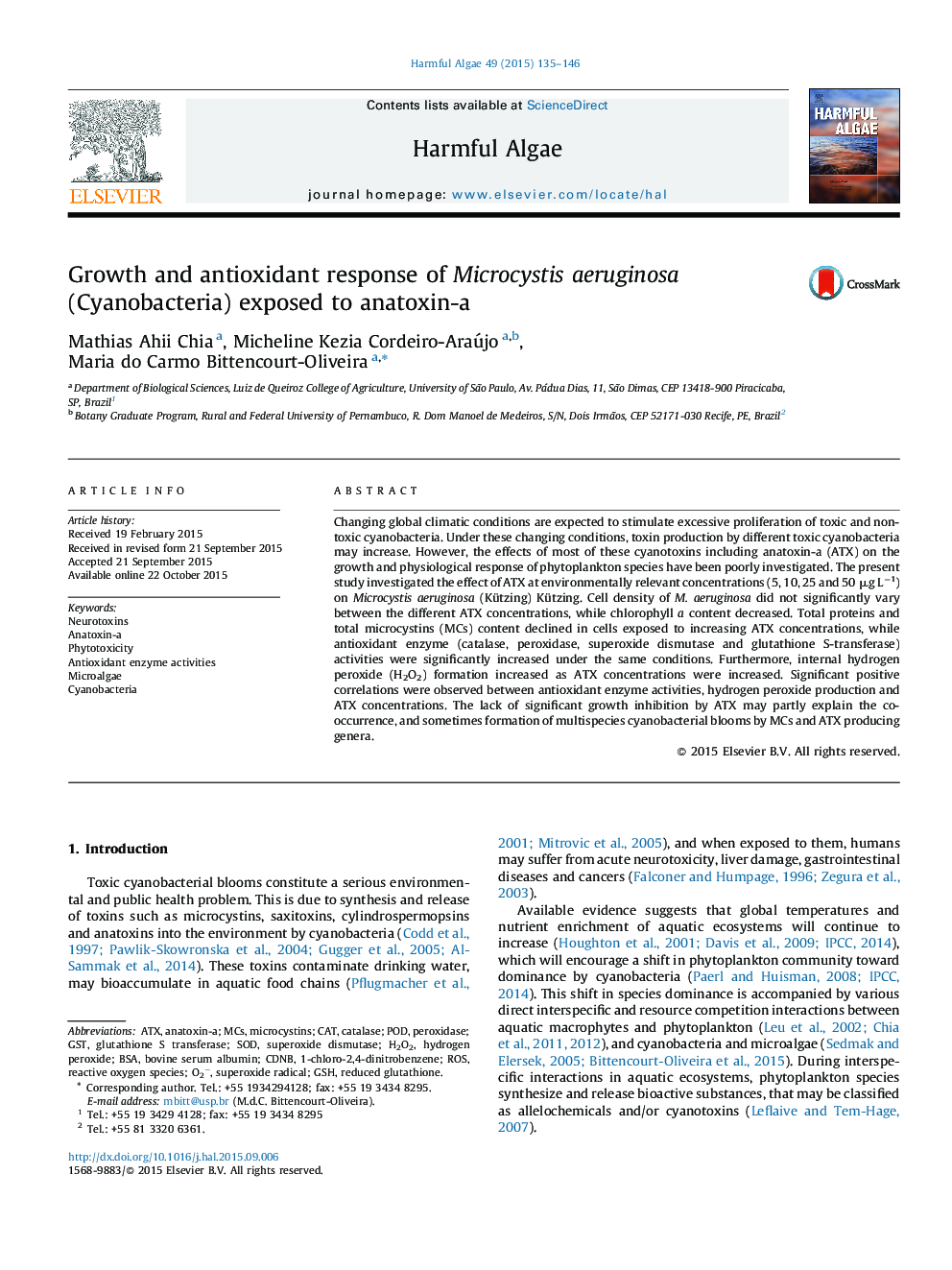| Article ID | Journal | Published Year | Pages | File Type |
|---|---|---|---|---|
| 4545225 | Harmful Algae | 2015 | 12 Pages |
•Microcystis aeruginosa was exposed to anatoxin-a (ATX).•ATX did not significantly affect the growth of M. aeruginosa.•Chlorophyll a, microcystins and total protein production were generally inhibited.•The toxin increased internal H2O2 formation in the cyanobacterium.•The activities of CAT, POD, SOD and GST were up-regulated.
Changing global climatic conditions are expected to stimulate excessive proliferation of toxic and non-toxic cyanobacteria. Under these changing conditions, toxin production by different toxic cyanobacteria may increase. However, the effects of most of these cyanotoxins including anatoxin-a (ATX) on the growth and physiological response of phytoplankton species have been poorly investigated. The present study investigated the effect of ATX at environmentally relevant concentrations (5, 10, 25 and 50 μg L−1) on Microcystis aeruginosa (Kützing) Kützing. Cell density of M. aeruginosa did not significantly vary between the different ATX concentrations, while chlorophyll a content decreased. Total proteins and total microcystins (MCs) content declined in cells exposed to increasing ATX concentrations, while antioxidant enzyme (catalase, peroxidase, superoxide dismutase and glutathione S-transferase) activities were significantly increased under the same conditions. Furthermore, internal hydrogen peroxide (H2O2) formation increased as ATX concentrations were increased. Significant positive correlations were observed between antioxidant enzyme activities, hydrogen peroxide production and ATX concentrations. The lack of significant growth inhibition by ATX may partly explain the co-occurrence, and sometimes formation of multispecies cyanobacterial blooms by MCs and ATX producing genera.
